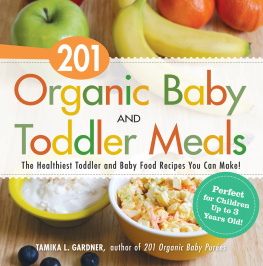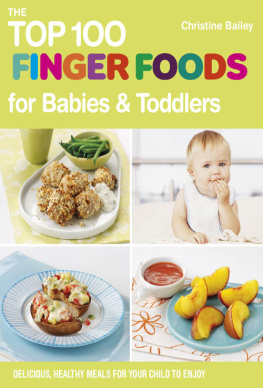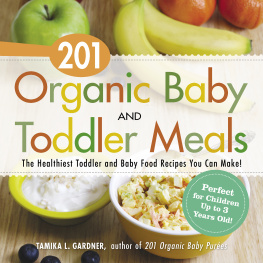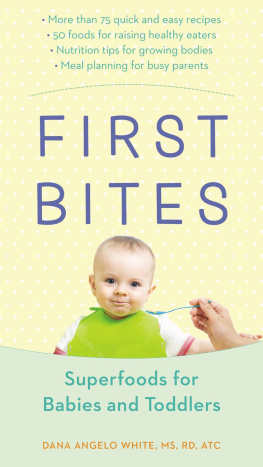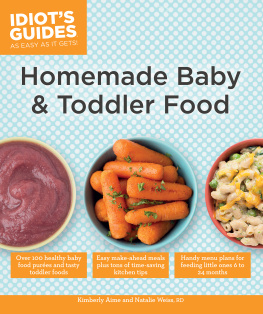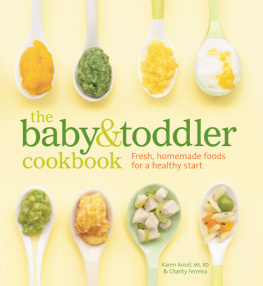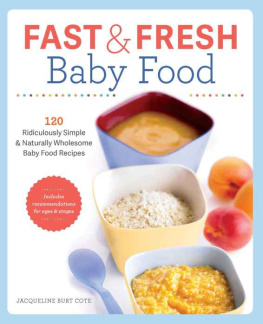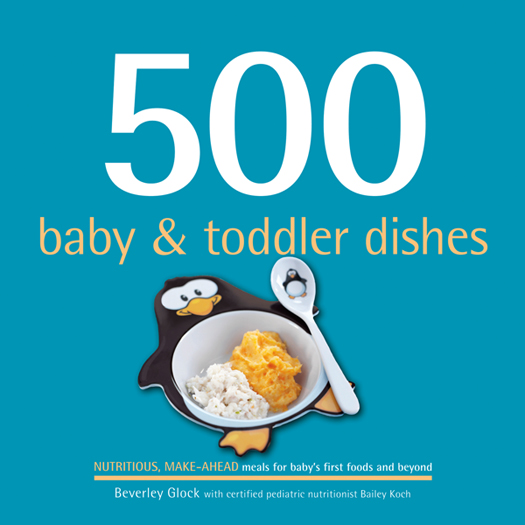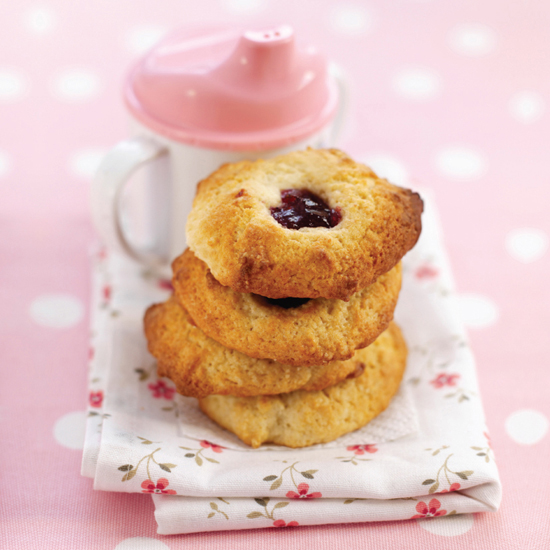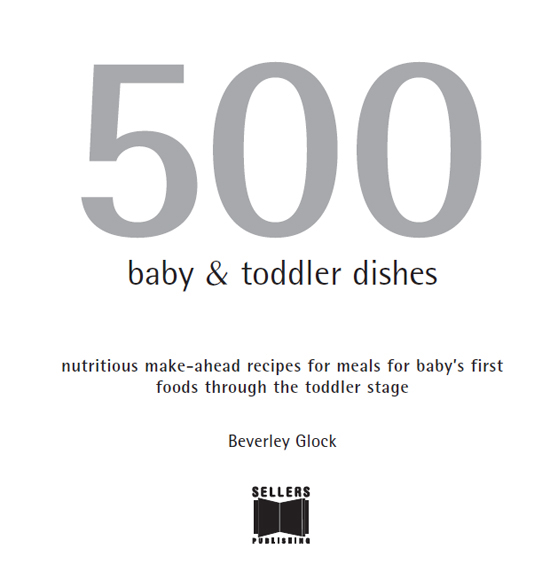Contents
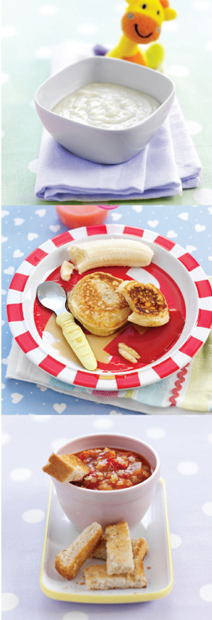
introduction
Weaning a baby can be daunting, especially for a new parent. When should you start feeding solids? Which foods should you give your baby? Which foods should you avoid? How much should you give? What texture should the food be? The questions go on and on, and you suddenly realize that breast or bottle feeding is actually very easy.
500 Make-Ahead Baby & Toddler Dishes will help answer those questions while inspiring you with simple, nutritious recipes for babies from their very first foods right through the toddler years. By making your own baby food, youll save money and youll know exactly what youre feeding your child, not worrying about checking ingredients on commercial baby food labels. Most of the recipes in this book are designed for the whole family to eat, so everyone eats the same meal, making your life easier.
ages & stages for solid foods
Its very important to introduce solid foods to your baby gradually and at the right time in their development. So read this section carefully and talk to your pediatrician if you have any questions. Also, read the section on food allergies and foods to restrict (.
NEVER leave babies or toddlers on their own when they are eating. It is easy for them to choke on food or put it in inappropriate places such as ears and noses, so make sure that a responsible adult is always with them.
babys first foods (46 months)
Do not give solid food to babies under 4 months, as their digestion is not ready and they should be wholly fed on breast milk or formula.
The recommended age to begin weaning is around 46 months; each baby is different and some are ready for solid food earlier than others. You need to trust your instincts and watch for signs from your baby that he or she is ready for some solid food. If your baby has been sleeping through the night and then starts waking up during the night demanding food, or begins drinking more breast milk or formula and does not seem satisfied, it may be time to introduce a little solid food. Always check with your pediatrician first.
Other signs of readiness to look for are:
good head control
trunk stability, able to sit alone in a high chair
starts to reach for your food
ability to swallow foods without gagging
Even when youve introduced some solid food, breast milk or formula should still be the primary food you give your baby.
Begin with one teaspoonful, once a day, of a solid food, usually rice cereal mixed with breast milk or formula, which is easy to digest. Once your baby has successfully eaten this for four or five days, with no adverse reaction, you can introduce a single fruit or vegetable. Wait for four days before introducing another. This is called the four-day rule. By introducing one new food at a time, you can determine if your baby has an intolerance or allergic reaction to that food. Once you know which foods your baby enjoys and can safely eat, you can keep feeding them to your baby as well as trying new ones too. Work up to an ice cube-size (or 1 ounce), which is a portion for a young baby.
The food should be very pureed and have a sloppy, liquid consistency. If needed, add breast milk, formula, or the cooking liquid to the puree to achieve this very thin consistency. Young babies may have problems eating thick purees and may gag on them.
moving forward (69 months)
At this stage, babies can now eat virtually the same food as the rest of the family, but without any salt and more mashed than the adults. Begin to gradually introduce new flavors by using small amounts of herbs and spices. Make sure you check that all the ingredients are recommended for the age of your baby and omit any from the adult meal that are not suitable. Your baby will grow up knowing that children and adults eat the same food and everyone eats together. This goes a long way to prevent fussy eaters.
Youll still puree or mash the food, but itll be a thicker puree than before. Keep portions based on 1 cube (1 ounce), but now introduce solids to more than 1 meal per day. If the recipes calls for, say, one banana: a 6-month-old baby cannot eat a whole banana, but he or she would eat up to 1/4 mashed. The rest of the puree can be refrigerated or frozen. Breast milk or formula should still be the babys main drink up to the age of 12 months. You may give fruit juices in very small amounts no more than 1/4 cup for babies under the age of 12 months. Juices must be 100% pasteurized fruit or vegetable juice, definitely not a fruit drink or juice drink. Juice should always be given from a cup, and not from a bottle. A bottle keeps the juice in contact with the babys teeth for longer and can cause cavities.
At this stage, you can introduce dairy products such as yogurt, cream cheese, crme frache, and pasteurized cheese. These should be full-fat dairy products, because children under the age of 2 years need a diet that is 4050% fat. However, do not give babies under 12 months cows milk as a beverage or even in cooking. (Read more about dairy products on .)
Eggs can be introduced if they are thoroughly cooked; scrambled eggs and omelets are good. Meat, chicken, turkey, and fish can be added at this stage. Start with milder flavors, such as chicken and white fish, before introducing beef, lamb, or salmon, so your baby has time to get used to new textures and flavors, before you gradually add stronger flavored food.
Always mash the meat or fish first, and offer separately from a vegetable or mixed together, depending on your babys preference. Make sure you add liquid to make it easier to swallow.
baby-led weaning
When your baby is 6 months and older, you could consider baby-led weaning, which means moving straight to finger food and allowing babies to feed themselves. No pureeing, no mashing, no tiny baby spoons. Whether you go this route depends on when you wean your baby, as baby-led weaning is not suitable for babies under 6 months old. It also depends on you as a parent and whether you prefer the traditional method of pureeing and mashing the food your 6-month-old eats.


